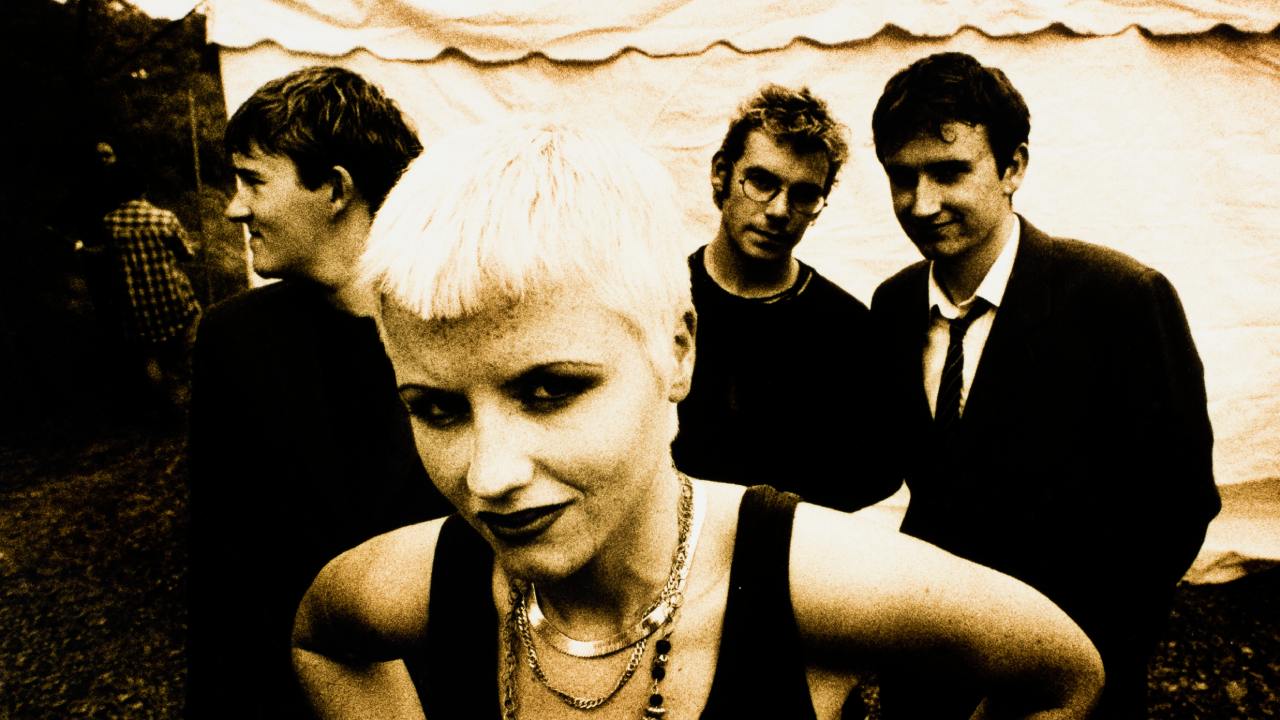By 1994 The Cranberries were stars: then came the incendiary song that made them massive
The Cranberries had already enjoyed success with their sweet ballads, but this storming left-turn, a furious track about the bombings in Northern Ireland, made them huge stars

By 1994, Limerick rock band The Cranberries had achieved international fame with their chart-topping, multi-platinum debut album Everybody Else Is Doing It So Why Can’t We?, and most people thought they knew exactly what the Irish four-piece were about.
As the final days of grunge stormed around them, they were a barefoot, floaty, slightly hippie-ish oasis of calm, the romantic longing of Linger and the fairy tale sugar-rush of Dreams further sweetened by singer Dolores O’Riordan’s girlish, heavily accented vocal style.
Then in September, in the run-up to the release of their second album, No Need To Argue, they turned their own image on its head by returning with Zombie, a grungy, gloomy, furious anti-war song that found O’Riordan raging against the violence caused by the conflict in Northern Ireland, which was making the news headlines on what seemed like a weekly basis.
On March 20, 1993, one of two bombs was planted in a litter bin in Warrington city centre by Irish republicans. When it exploded, 12-year-old Tim Parry and three-year-old Jonathan Ball were killed, and dozens of people injured, in an attack that shocked and appalled the public in the UK and Ireland alike. When the news of the attack broke, The Cranberries were on tour in the UK, and O’Riordan was on the tour bus in London.
“I remember at the time there were a lot of bombs going off in London and the Troubles were pretty bad,” she said, 24 years later. “I remember being on tour and being in the UK at the time when the child died, and just being really sad about it all. These bombs are going off in random places. It could have been anyone, you know?
“It’s a tough thing to sing about, but when you’re young you don’t think twice about things, you just grab it and do it. As you get older you develop more fear and you get more apprehensive, but when you’re young you’ve no fear.”
Zombie was written in a rare lull between tours; the band had spent the majority of the year on the road in the US, touring universities and arenas and building up their brand. Rather than being a collaborative effort, it was written by O’Riordan alone, in the calm of her own flat, and it began life as a much gentler proposition than it ended up as.
Sign up below to get the latest from Classic Rock, plus exclusive special offers, direct to your inbox!
“It was extremely busy and we were working all the time around the clock,” she said. “That song came to me when I was in Limerick, and I wrote it initially on an acoustic guitar, late at night. I remember being in my flat, coming up with the chorus, which was catchy and anthemic. So I took it into rehearsals, and I picked up the electric guitar. Then I kicked in distortion on the chorus, and I said to Ferg [Fergal Lawler, drums]: ‘Maybe you could beat the drums pretty hard.’ Even though it was written on an acoustic, it became a bit of a rocker.
“That was the most aggressive song we’d written. Zombie was quite different to what we’d done before.”
It was recorded in Dublin with producer Stephen Street, who spent a long time working on getting the guitar settings right to give a suitably expansive sound. But while they were experimenting with raising the volume, O’Riordan said it wasn’t a concerted effort to ride the grunge bandwagon.
“It came organically because we were using our live instruments, we were plugging in a lot, and we started to mess around with feedback and distortion. When you’re on tour you start to mess around a bit more with the live side of things. There were a lot of bands around that were part of the grunge thing, and this wasn’t grunge, but the timing was good. We couldn’t have really fitted in with grunge, because we were just a different type of a band. We were Irish and from Limerick, and we had a lot of our own ideas. A lot of the grunge bands were very similar to each other.”
Equally important to the success of the track was the accompanying video, in which the singer was painted gold and surrounded by silver-painted cherubs. It was inter-cut with documentary footage of soldiers and children on the streets of Northern Ireland, filmed by director Samuel Bayer, who also made the videos for Nirvana’s Smells Like Teen Spirit and Blind Melon’s No Rain. It'd become one of the biggest rock music videos of its era.
“I actually thought the director was very brave,” said O’Riordan. “When he got back, he was pretty pumped – there was a lot of adrenaline pumping through him. He was telling me how tense it was and how he was blown away by the whole thing. He got footage of the kids jumping from one building to another, and he got a lot of footage of the army. He was a very good director.”
Released in 1994, Zombie went to No.1 in several countries and on the US rock chart (although it only made it to No.14 in the UK), and was certified platinum in Australia and Germany. At the MTV Awards, the band beat Michael Jackson and TLC to win Best Song. But that paled into insignificance when they were invited to perform it at the Nobel Peace Prize in 1998, when Ulster Unionist leader John Hume and SDLP leader David Trimble were honoured “for their efforts to find a peaceful solution to the conflict in Northern Ireland”.
Parent album No Need To Argue went on to sell 17 million copies, and made O’Riordan very rich. “I wouldn’t change anything about it, because it did so well,” she said. “It was well-written and it was well-composed. I think it did so well because it’s hard to categorise it. And I still like singing it.”
The cranberries revisited Zombie in 2017, less than a year before O'Riordan's tragic death, when they re-recorded an acoustic version with the Irish chamber orchestra for the band’s reworked greatest hits collection Something Else.
“We did it with a quartet, so it’s a lot tamer but it’s still nice,” said O’Riordan. “it’s interesting to do acoustic versions of your songs because it kind of shows that they can stand acoustically as well: is it a good song? Has it a good chorus? Has it a good verse? Does it have a bridge? “I think when you’re young you have lots of aggression. When you get older it kind of goes away, you get a bit more laid-back. it was fun to go back to it.”
Emma has been writing about music for 25 years, and is a regular contributor to Classic Rock, Metal Hammer, Prog and Louder. During that time her words have also appeared in publications including Kerrang!, Melody Maker, Select, The Blues Magazine and many more. She is also a professional pedant and grammar nerd and has worked as a copy editor on everything from film titles through to high-end property magazines. In her spare time, when not at gigs, you’ll find her at her local stables hanging out with a bunch of extremely characterful horses.

